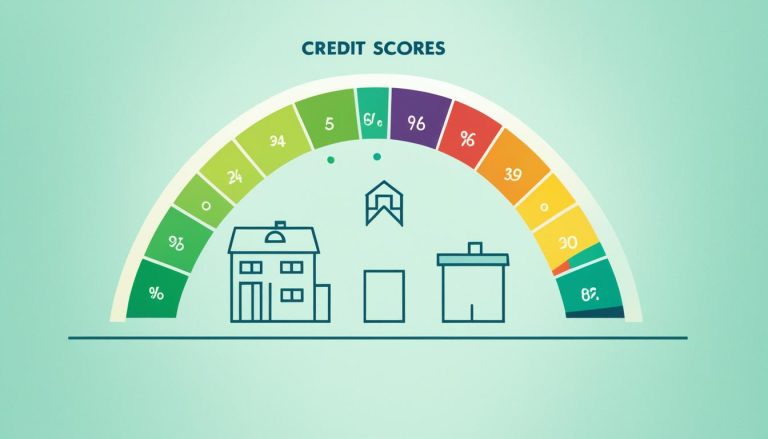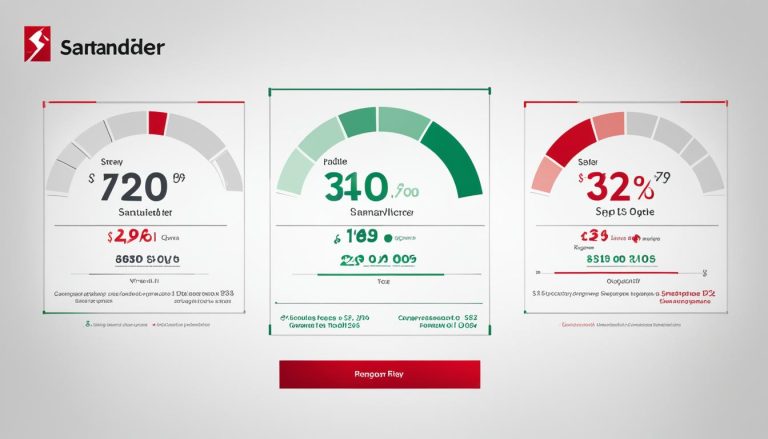Welcome to our comprehensive guide to tracker mortgages, where we will delve into the meaning, definition, and advantages of this popular mortgage option. If you’re in the market for a new home loan or considering refinancing, understanding tracker mortgages can help you make an informed decision that aligns with your financial goals and circumstances.
A tracker mortgage is a type of home loan where the interest rate is directly linked to a specific benchmark, typically the Bank of England base rate. This means that the interest rate on your mortgage will rise or fall in line with changes to the base rate, offering potential savings in times of rate reductions.
Unlike fixed rate mortgages where the interest rate remains unchanged for a predetermined period, tracker mortgages provide flexibility as they allow borrowers to benefit from favorable interest rate fluctuations. This can result in cost savings over the long term, depending on market conditions.
One of the key advantages of a tracker mortgage is transparency. As the interest rate is linked to an external benchmark, borrowers have clarity on how rate changes will impact their monthly repayments. This can help with budgeting and financial planning, providing peace of mind throughout the mortgage term.
Throughout this guide, we will explore how tracker mortgages work, compare them to fixed rate mortgages, and highlight the specific benefits they offer. Whether you’re a first-time buyer or a homeowner looking to remortgage, we aim to empower you with the knowledge needed to navigate the world of tracker mortgages confidently.
Continue reading to discover how tracker mortgages work and how they can potentially benefit you. By the end of this guide, you’ll have a clear understanding of whether a tracker mortgage is the right choice for your home financing needs.
How does a Tracker Mortgage Work?
If you’re considering a tracker mortgage, it’s important to understand how it works and what factors can affect your repayments. In this section, we will break down the mechanics behind a tracker mortgage, including how tracker mortgage rates are determined and how you can use a tracker mortgage calculator to estimate your monthly repayments.
Tracker Mortgage Rates
Tracker mortgage rates are typically tied to an external interest rate, such as the Bank of England’s base rate. As the base rate fluctuates, so too will your tracker mortgage rate. This means that your monthly repayments can increase or decrease depending on market conditions.
It’s important to note that tracker mortgage rates are usually set at a fixed percentage above or below the base rate. For example, if the base rate is 0.5% and your tracker mortgage is set at a rate of 1% above the base rate, your mortgage rate would be 1.5%.
Using a Tracker Mortgage Calculator
A tracker mortgage calculator is a useful tool for estimating your monthly repayments based on the current interest rate. By inputting the loan amount, interest rate, and repayment term, the calculator can provide you with an estimate of your monthly payments.
It’s important to remember that a tracker mortgage calculator provides an estimation and the actual monthly repayments may vary depending on any changes in the interest rate over time.
![]()
By now, you should have a clear understanding of how a tracker mortgage works. In the next section, we will compare tracker mortgages with fixed rate mortgages to help you make an informed decision about which mortgage type is right for you.
Tracker Mortgage vs Fixed Rate Mortgage: A Comparison
When it comes to choosing a mortgage, two common options that homeowners often consider are tracker mortgages and fixed rate mortgages. Each type has its own advantages and disadvantages, making it crucial to compare them before making a decision. In this section, we will outline the key differences between tracker mortgages and fixed rate mortgages, helping you make an informed choice based on your financial goals and circumstances.
Tracker Mortgage
A tracker mortgage is a type of mortgage where the interest rate follows the Bank of England base rate or a specified index. As the base rate fluctuates, the interest rate on a tracker mortgage will also change accordingly. This means that your monthly mortgage payments can go up or down over time.
Advantages of a tracker mortgage:
- Initial lower interest rates compared to fixed rate mortgages
- Benefit from potential savings if the base rate decreases
- Flexibility to switch to a fixed rate mortgage if needed
Disadvantages of a tracker mortgage:
- Risk of higher monthly payments if the base rate increases
- Uncertainty as interest rates can fluctuate
- May not be suitable for those who prefer stable and predictable mortgage payments
Fixed Rate Mortgage
A fixed rate mortgage, on the other hand, offers a stable interest rate that remains fixed for a specific period of time, typically between two to five years. This means that your monthly mortgage payments will remain the same, regardless of any changes in the base rate.
Advantages of a fixed rate mortgage:
- Security and predictability with fixed monthly payments
- Protection against potential base rate increases
- Easier budgeting and financial planning
Disadvantages of a fixed rate mortgage:
- Higher initial interest rates compared to tracker mortgages
- No immediate benefit from base rate decreases
- Potential fees for switching to a lower rate if interest rates decrease
| Tracker Mortgage | Fixed Rate Mortgage | |
|---|---|---|
| Interest Rate | Variable, follows base rate or specified index | Fixed for a specific period of time |
| Monthly Payments | Can fluctuate depending on base rate changes | Remain the same throughout the fixed rate period |
| Risk | Risk of higher payments with base rate increases | No risk of increased payments during the fixed rate period |
| Flexibility | Option to switch to a fixed rate mortgage | Not applicable during the fixed rate period |
As seen in the table above, tracker mortgages offer flexibility and potential savings if the base rate decreases, while fixed rate mortgages provide stability and protection against potential base rate increases. Ultimately, the choice between a tracker mortgage and a fixed rate mortgage depends on your risk tolerance, financial situation, and long-term goals.
![]()
Benefits of a Tracker Mortgage
A tracker mortgage offers a range of advantages that can benefit both homebuyers and homeowners looking to remortgage. By opting for a tracker mortgage, individuals can enjoy the following benefits:
- Potential Cost Savings: One of the key advantages of a tracker mortgage is the potential for cost savings. As the interest rate is directly linked to the base rate set by the Bank of England, borrowers can benefit from lower monthly repayments if the base rate decreases. This can result in significant savings over the course of the mortgage term.
- Flexibility in Interest Rate Changes: Unlike fixed-rate mortgages, which have a set interest rate for a predetermined period, tracker mortgages offer flexibility in interest rate changes. As the base rate fluctuates, the interest rate on the tracker mortgage adjusts accordingly. This flexibility allows borrowers to take advantage of favorable interest rate conditions.
- Transparency: Tracker mortgages are known for their transparency. As the interest rate is directly tied to the base rate, borrowers can easily understand and keep track of how any changes in the base rate will impact their mortgage repayments. This transparency provides peace of mind and enables borrowers to plan their finances effectively.
Overall, a tracker mortgage offers the potential for cost savings, flexibility in interest rate changes, and transparency. It is important for individuals to carefully consider their financial goals and circumstances before deciding if a tracker mortgage is the right option for them.
![]()
Conclusion
In conclusion, understanding tracker mortgages is essential for individuals seeking a home loan or considering remortgaging options. Throughout this article, we have explored the meaning and definition of tracker mortgages, delved into how they work, compared them to fixed rate mortgages, and highlighted their benefits.
By opting for a tracker mortgage, borrowers have the advantage of benefiting from potential cost savings due to the variable interest rates that track the base rate set by the Bank of England. This flexibility allows homeowners to take advantage of favorable interest rate changes, ultimately reducing their monthly repayments.
However, it is important to carefully consider individual financial circumstances and goals before deciding on a tracker mortgage. Some potential drawbacks include the uncertainty of interest rate fluctuations and the potential for higher repayments if the base rate rises. Taking these factors into account will ensure borrowers make an informed decision.
With the knowledge gained from this article, readers are now equipped to navigate the world of tracker mortgages and make well-informed decisions based on their specific circumstances. Whether it’s a first-time buyer looking to get on the property ladder or a homeowner considering remortgaging, understanding the intricacies of a tracker mortgage is essential for achieving financial stability and maximizing cost-effective options in the long run.
FAQ
What is a tracker mortgage?
A tracker mortgage is a type of mortgage where the interest rate is directly linked to an external benchmark, typically the Bank of England’s base rate. This means that the interest rate on a tracker mortgage will fluctuate in line with changes in the benchmark rate.
How does a tracker mortgage work?
A tracker mortgage works by setting the interest rate at a fixed percentage above or below the benchmark rate. For example, a tracker mortgage may have an interest rate of “base rate + 1%”. This means that if the benchmark rate increases by 0.25%, the interest rate on the tracker mortgage will also increase by 0.25%. Similarly, if the benchmark rate decreases, the interest rate on the tracker mortgage will decrease accordingly.
What are the advantages of a tracker mortgage?
One advantage of a tracker mortgage is that it offers transparency and allows borrowers to benefit from decreases in the benchmark rate. Additionally, tracker mortgages often have lower interest rates compared to fixed rate mortgages. This can result in lower monthly repayments and potential savings over the life of the mortgage.
What are the pros and cons of a tracker mortgage vs a fixed rate mortgage?
Tracker mortgages offer the benefit of flexibility and the potential for lower interest rates during periods of decreasing benchmark rates. On the other hand, fixed rate mortgages provide stability and protection against future interest rate increases. The choice between the two ultimately depends on an individual’s risk tolerance and their outlook on future interest rate movements.
How can I calculate my monthly repayments on a tracker mortgage?
You can use a tracker mortgage calculator to estimate your monthly repayments. These calculators take into account the current interest rate, the loan amount, and the remaining term of the mortgage. By inputting these details, you can get an estimate of your monthly repayment amount.






